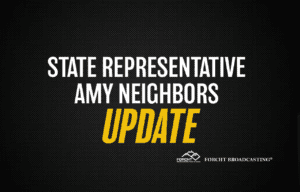While legislative committees tackle a variety of issues in the months between legislative sessions, without a doubt the most important is the state budget. The legislature is the only branch of state government with the constitutional authority to allocate money, and we do so on a two-year cycle with a budget passed in even-numbered years. Budget proposals generally originate in the House, where they are analyzed by the House Appropriations and Revenue Committee.
The work of writing our next budget really starts the minute the previous budget passes. We immediately begin monitoring how the state is spending the money allocated, as well as how money is coming in from taxes and fees. Soon after, we enter the phase we are in now as we begin looking at individual parts of the budget, including specific programs and agencies, to determine if funding needs are changing. This is an important step and requires us to determine if the program is operating as efficiently as possible and if it is serving its purpose.
In July, members of the Interim Joint Committee on Appropriations and Revenue heard from the legislature’s budget staff about budget trends and disaster response, as well as an analysis of our current economy. Presenters highlighted the need for long-term stability, saving enough for the future, and making smart investments, while also keeping up with changes in how money is being spent. In recent budgets, the most substantial portion of general funds is directed towards K-12 education and Medicaid, with the latter seeing a total per-person increase of $615 to $1,034 since the pandemic began.
For clarification, the term “general fund” refers to the state’s main account, which is used to pay for most public services. It holds the majority of taxes and fees collected by the state, including income taxes, sales taxes, and business taxes. General Fund money is used to fund things like public education, the Kentucky State Police, disaster preparedness, military affairs, and other state agencies. Think of it like the state’s main checking account. Unlike restricted funds, which are reserved for specific purposes, the general fund supports a wide range of programs based on the state’s priorities each year. For example, we restrict the use of motor vehicle fuels taxes for the maintenance and construction of our roads, bridges, and transportation infrastructure. Some programs – like Medicaid – are paid for with general and restricted funds.
We talk a lot about spending, but we cannot forget that almost every dollar we spend – including money we receive from the federal government – was collected through a fee or tax. That is why it is so important we budget wisely. Increasing spending in one area means the money has to come from somewhere and I for one believe Kentuckians are taxed enough. After all, common sense tells you that no government ever taxed itself to prosperity. That is one reason we are working to eliminate the state’s individual income tax (the legislature has lowered it four times from 6% in 2017 to 3.5% in January of 2026) and make all taxes and fees more equitable. We have seen what Kentuckians can do with this money as they invest in their communities, save and spend it on items they want.
Our current budget continues to provide the necessary funding to meet our needs. And, our financial health is further strengthened by the Budget Reserve Trust Fund, which has grown from a zero balance in 2011 to roughly $3.5 billion today. Setting this money aside means we are not only better prepared for a crisis, but also enabled major one-time investments across various sectors, including transportation projects (nearly 25%), economic development (14%), sewer and water grant programs, local government support, hospitals, post-secondary education, and a substantial allocation of $3,110,031,900 over three fiscal years to address unfunded liabilities in the state retirement system. Additionally, committee members discussed budget changes requested by the executive branch and heard from the Council on Postsecondary Education.
The budget process is a meticulous, multi-stage undertaking designed to ensure fiscal responsibility and investment. Soon after we convene the 2026 Regular Session in January, the budget will be filed as several bills to reflect subject areas like the judicial, legislative, and executive branches, as well as the plan for road construction and maintenance. Each of these measures must be approved by the committee, then sent to the full House for consideration.
Upon House passage, the budget measure moves to the Senate, often resulting in changes presented as a committee substitute. The different versions from both chambers then necessitate a crucial step: a free conference committee. Here, representatives from both the House and Senate engage in discussions and negotiations to reconcile differences and reach a consensus agreement before the final bill passes both chambers.
When the General Assembly passes the budget, it will embody our core mission: funding crucial state services and making sure every dollar spent genuinely helps all Kentuckians. A budget plan is designed to empower us, no matter what challenges or opportunities lie ahead.
As always, I can be reached anytime through the toll-free message line in Frankfort at 1-800-372-7181. You can also contact me via email at Amy.Neighbors@kylegislature.gov and keep track through the Kentucky legislature’s website at legislature.ky.gov.
(HD21 – News From the Office of Rep. Neighbors)


